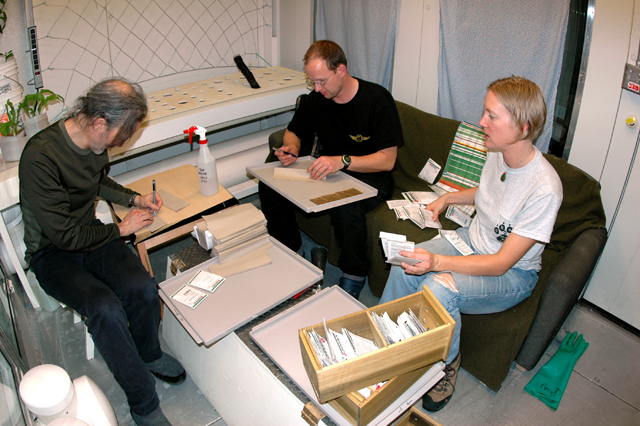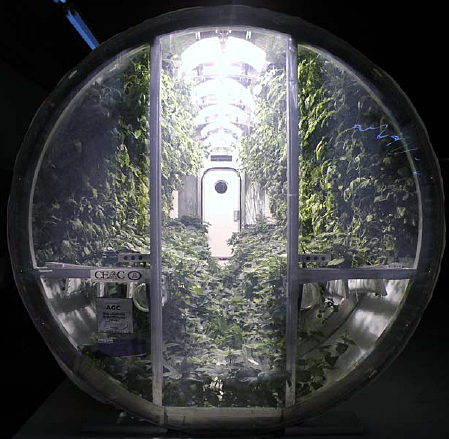To the moonSouth Pole greenhouse model for growing freshies on other worldsPosted March 4, 2011
The automated South Pole Station The growth chamber, or greenhouse as the crew calls it, is a moist environment in the driest environment on Earth. It also serves as an intimate space for crewmembers to relax and meet among the aromatic plant life soon to be served at the dinner table. Population and station traffic peak during the short sunny summer at South Pole between October and February. During the long, dark winter, the sun is absent from the sky, and all the fresh vegetables the crew eats are grown in the 70-cubic-yard growth chamber. Crops of lettuce, kale, cucumber, peppers, herbs, tomatoes, cantaloupes and edible flowers comprise many of the plants grown in the climate-controlled chamber. Because the importation of soil is restricted by the Antarctic Treaty For that matter, no sunlight is needed either. The growth chamber, which was built in the winter of 2004, makes its own light via 13 water-cooled, high-pressure sodium lamps. In this bright environment, it is not uncommon to find people, like the plants, dwelling happily under the intense light produced in the chamber during the dark polar winter. “Most of us miss green things. We give up fields of grass, flowers and trees when we sign on for a season in this high, cold desert,” says Dr. Ella Derbyshire, a physician who wintered over in 2010. “But the greenhouse is a bright, warm oasis where we can feel water vapor in the air and smell green growing plants. It heals us and reminds us of the living world beyond the ice.” Derbyshire’s sentiments are common among the men and women living at South Pole. But there’s an added bonus to the greenhouse in addition to fresh food and warm feelings. The plants produce oxygen as they grow. While oxygen is abundant at the South Pole, as elsewhere on the planet, it is lacking on the moon or Mars — likely places for human colonies in outer space. The National Science Foundation’s The Lunar Greenhouse Prototype, funded by NASA’s It employs much of the same technology used by the South Pole Food Growth Chamber, such as the water-cooled lamps, automated hydroponic delivery, and climate-controlled environment. And like the South Pole greenhouse, we can monitor and control it remotely via the Internet. The Lunar Greenhouse demonstrates how a modular, lightweight growth chamber could be collapsed for launch on a spacecraft and deployed on another world (Videos of lunar chamber deployment and lunar chamber construction Recently, findings produced by the South Pole Food Growth Chamber were presented to the students at the Singularity University These findings served as “food for thought” to the students, who took on the task of considering how to develop and implement robust food production systems that sustainably nourish future human populations while restoring and maintaining Earth’s ecosystems. In this context, the students were given a detailed look at how such healthy environments can be incorporated into our urban architecture in order to solve problems that we face in this century of booming populations, and limited resources and space. Joe Romagnano and Gene Giacomelli contributed to this article. |



For USAP Participants |
For The Public |
For Researchers and EducatorsContact UsU.S. National Science FoundationOffice of Polar Programs Geosciences Directorate 2415 Eisenhower Avenue, Suite W7100 Alexandria, VA 22314 Sign up for the NSF Office of Polar Programs newsletter and events. Feedback Form |




